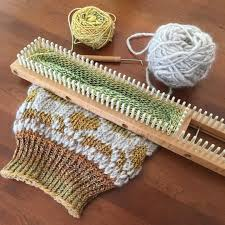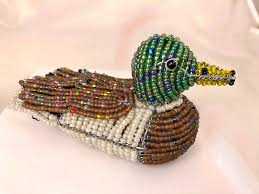Almost twenty years ago, Associated Content requested articles with the title "Sharing Crafts with Your Niece." What follows was one of the most popular of the articles they published. I think the idea is "evergreen," but some things about this post needed to change.
One major change: I need to mention that, obviously, the niece who was discussed here is older and more capable by now. Perhaps one day she'll write something about Sharing Crafts with Your Aged Aunt.
The other: Back then, we did search engine optimization by simple stunts like repeating the keyword ten times in the subheadings for each item on a Top Ten list. Now, we don't need to bother about search engine optimization, because the top ratings on Google are for sale and you can't afford them, but we can decorate posts with fair-use photos.
The article:
My mother sews tailored clothes. My sister sculpts ceramic animals. I knit sweaters. All of us have also done some drawing and painting.
My niece looks lovely in the clothes her aunt and grandmother have made for her. She enjoys drawing, but isn’t quite ready to rent a gallery. She does help me use up a lot of scrap paper.
Here is a Top Ten list of things preschool and primary school children can make, and even display at a craft show or at least a flea market, while they’re still at the drawing-on-the-other-side-of-scrap-paper stage.
#1: Glitter Glue. You need: some old bottles and jars, too small or odd-shaped for canning; glitter glue; some string, yarn, ribbon, etc.; paper decals, macaroni letters, etc., for embellishments.
Clean and dry the bottles or jars. Decorate with glitter glue, ribbon, decals, etc. Bottles can be used to hold flowers or organize nails, pencils, knitting needles--whatever will fit.
#2: Scrapbooks. You need: a nice binder, some durable paper (the more different colors the better),some pictures (newspapers and coloring books can be used), assorted crayons and markers for decoration.
No one is ever too young for scrapbooks, whether you’ve lived long enough to have compiled a really historic scrapbook, or just want to have fun cutting and pasting. Add decorative stickers, ribbons, sequins--whatever you find to enhance photos, programs, cards, etc. You can also buy or make stampers for further decoration--see below.
#3: Stamping. You need: stampers (purchased, and/or carved out of wood or linoleum, and/or carved out of carrot ends or potatoes); paper or cardboard; stamp pads, preferably in a selection of colors.
Very young nieces enjoy just stamping all over the place. School-aged nieces usually want to make a neat, professional image that fits onto a page, and can design and make professional-quality greeting cards if you buy nice card stock.
#4: Calligraphy. You need: a calligraphy pen with a point (not cheap, but the whole family can reuse it indefinitely); attractive paper; if you want your niece to have a whole table or corner to herself, a selection of colored paper and ink; and some beautiful thoughts for her to write out in beautiful style.
Anyone who can write legibly is ready to try calligraphy. Use scrap paper until your italic or cursive style pleases you, then move on to fancy paper.
#5: Buttons. You need: easy-baking clay such as Sculpey; suitable paint; an oven, as recommended for the clay you use. Polymer clay makes durable buttons and bakes at ordinary kitchen temperatures.
Your niece presses the clay into interesting shapes--round, square, free-form, whatever. You poke holes in it and bake it. Either or both of you can paint the buttons when dry.
#6: Braids, Bows, and Macrame. You need: lengths of ribbon, cord, string, yarn, or thread.
Find material to suit your purpose--heavy cord for hanging flowerpots, dainty threads for bracelets and hair ornaments. Begin by letting your niece practice making basic braids and knots. Once she’s learned the techniques, you can add beads, junk jewelry, shells or other found natural objects, to make things suitable for hanging on the walls, wearing around your neck, or hanging flower pots.
#7: Pot Holders. You need: a cheap plastic weaving frame, a crochet hook (or the wire hook that may come with the frame), and a selection of sock tops (or similar bands of fabric).
You can cut thin even strips off the tops of your family’s old socks, if you’ve accumulated enough of them, or buy precut loops just for weaving, or even use loops of knitting yarn (trim the knots to make a nice even fringe). Your niece can have fun planning stripes, plaids, and rainbow-shaded effects.
#8: Frame Knitting. You need: a knitting frame, or frames; some yarn; a crochet hook
Knitting frames come in a wide range of sizes and shapes. Straight plastic frames can be hooked together to make full-sized garments and afghans. Knitting spools or circular knitting frames are usually suitable for knitting only a limited selection of shapes. You can, however, use circular knitting frames with eight or more pegs to make flat strips, which can then be sewn, braided, or woven together to make legs for stuffed animals, sleeves for dolls’ clothes, strands for braided rugs, or even fingers for thumbs or mittens.
#9: Beadwork. You need: lots of beads (patterns published in adults’ craft magazines will specify the numbers and colors, or you can design your own pattern on graph paper and count the dots), and string or cord for stringing them on. You can also use pins or wires to make bead sculptures.
#10: Nature Crafts. You need: twigs, cones, leaves, seed pods, and other things found on nature walks; glue or paste; paint, ribbons, and thread for embellishment, if any.










No comments:
Post a Comment